Having considered the post war historical context of the Anglo-American military intelligence industrial complex’s long standing operational relationship with Islamist extremists in Part 1, we now examine the emergence of al Qaeda in the years before 9/11. Of course al Qaeda are not the evil bogey men they once were. For a while they were eclipsed by ISIS, who the Anglo-American establishment also helped to create, and, despite apparently murdering 3000 innocent people on 9/11, officially became the Wests allies in Syria in the guise of the al Nusra Front (now rebranded as Jabhat Fateh al-Sham) or ‘al Qaeda in Syria.’
However despite the West’s more formal support for al Qaeda in Syria (and Iraq) there is no doubt that they were blamed for perpetrating the 9/11 attack which created the narrative that underpins the ‘war on terror.’ In response, the NATO powers created failed states in Europe, Central Asia, North and Central Africa, the Middle East and elsewhere.
In the 18th century the emir of Najd, Muhammad ibn Saud, head of the al Saud tribal family, formed an alliance with Muhammad ibn Abd al Wahhab, the founder of Wahhabism, and his ferocious fighters. The Wahhabi part of the deal was to fight and pay their taxes to bolster the al Saud coffers. By the 19th century this partnership resulted in the Wahhabi ‘Muslim brothers’ of the Ikhwan capturing Riyadh to return the house of Saud to power. By 1925, with the fierce Wahhabi troops under his command, Abd Al-Aziz ibn Saud had seized both Mecca and Medina and was well on his way to establishing the Kingdom of Saudi Arabia. However, his Wahhabi warriors wanted to create a Wahhabi caliphate across the Middle East. Realising this would jeopardise his personal ambitions, Abd al-Aziz slaughtered the fighters who brought him to power.
In 1931 OBL’s father Mohammad bin Laden, emigrated to the fledgling Kingdom of Saudi Arabia from Yemen. An astute business man, he built strong relationships with the future King Abdul al Aziz and King Faisal. In 1933 the young Kingdom granted the Rockefeller owned ‘U.S. Standard Oil’ exclusive oil exploration rights. Just over a decade later, in 1945, the dying U.S. President, Franklin D. Roosevelt, met with King Abdul al Aziz and they made a deal that would underpin U.S. Saudi relations for the rest of the century. The Saudis agreed to sell their oil to the U.S. and, reciprocally, the U.S. pledged its military might to protect the rule of al Saud.
King Abdul al Aziz stipulated another condition of the deal. In return for oil the U.S. would also protect the Saudi faith, Wahhabism. This is the basis of the Western powers long standing arrangement with Islamist fundamentalism (which accurately describes Wahabism.) First and foremost it was part of a business deal. This developed throughout the second half of the 20th centuary as the CIA and MI6 built a working relation ship with the Islamists. Osama bin Laden was a follower of Wahhabism. The religious fundamentalism so often cited as the basis of the Islamists world view and demonised in the western media as barbaric, is the same religious ideology the Western powers have been supporting the Saudis to export globally.
In the imediate aftermath of 9/11, while the U.S. and world’s mainstream media (MSM) were enthusiastic to report Osama bin Laden ‘did it,’ scarcely a mention was made of the fact he refuted the allegation. This unusual repudiation of culpability seems odd given that most Islamist terrorist groups are more than happy to claim responsibility for attacks, even when they didn’t commit them. According to some, including the 9/11 Commission itself, OBL wasn’t the mastermind behind the attacks, just the operational coordinator and financier. Therefore his demonisation as the evil overlord conflicts somewhat with the 9/11 Commissions own opinion that the funding of the attacks was “..of little practical significance.” Others claim that Bin Laden was merely a figurehead for a loose coalition of Islamist extremists, we call ‘al Qaeda,’ who are largely a product of the western military intelligence establishment’s influence in Afghanistan during Operation Cyclone.
This chimes with crazy conspiracy theorist views that al Qaeda never existed until Western intelligence agencies helped to create it. The concept of the centrally coordinated, international terrorist cell network was simply a ‘bogey man’ designed to give children (and their parents) nightmares. It also provided the ‘military industrial intelligence complex’ an ever elusive, perpetually profitable, enemy which required never ending budget increases to combat. This is not to suggest that al Qaeda don’t exist but rather that they probably wouldn’t exist without Western support. Their ability to run an apparent global network, absent the complicity of elements within western intelligence, is questionable.
Robin Cook, the British Foreign Secretary at the time of the 9/11 attack, was one of the conspiracy scatterbrains who thought this was the case. He later refused to support his government’s subsequent call for war in Iraq in 2003. Citing a lack of legal authority or supporting evidence to justify war, his resignation speech is considered by many to be one of the greatest oratories ever delivered in the post WWII British Parliament. Cook, privy to intelligence assessments at the time of 9/11, remained a critical back bench MP and wrote an article in 2005 which cast doubt upon the official al Qaeda ‘mythology.’ In the immediate aftermath of the London 7/7 atrocity, He wrote:
“…..Bin Laden was, though, a product of a monumental miscalculation by Western security agencies. Throughout the 80s he was armed by the CIA and funded by the Saudis to wage jihad against the Russian occupation of Afghanistan. Al-Qaida, literally ‘the database’, was originally the computer file of the thousands of Mujahideen who were recruited and trained with help from the CIA to defeat the Russians.”

Four weeks later, aged 59, Cook unexpectedly died while out walking with his wife in the Scottish Highlands. Despite being a physically fit man, he suffered a fatal heart attack and fell down a hillside where he was initially assisted by another hillwalker who made the 999 emergency call. He was flown to hospital 30 minutes after his fall. His wife did not accompany her husband to hospital. The third person,who called the emergency services, present at the scene of his death has never been identified.
There is little doubt that 9/11 and 7/7 were false flag attacks. The evidence which substantiates this is explored in detail in the book A Dangerous Ideology (which is available for free to In this Together newsletter subscribers so why not get yourself a copy?) Al Qaeda were linked to both attacks which were seminal in building the narrative, and public support on both sides of the Atlantic, for the so called ‘war on terror.’
 During the 1980s the CIA ran ‘Operation Cyclone’ to arm, train and equip Afghan Mujahideen fighters in their war against the occupying forces of the USSR. The CIA superficially made efforts to distance themselves from the most radical Islamist elements and liaised with Pakistan’s Inter-Service Intelligence (ISI) to funnel funds to the extremists. A significant proportion of the estimated $5Bn investment was administered by Maktab al Khidamat (MAK.) The CIA had grown tired of the tribal infighting that plagued the Afghan fighters and looked towards foreign extremists as a better option. MAK was run by Osama Bin Laden, among others.
During the 1980s the CIA ran ‘Operation Cyclone’ to arm, train and equip Afghan Mujahideen fighters in their war against the occupying forces of the USSR. The CIA superficially made efforts to distance themselves from the most radical Islamist elements and liaised with Pakistan’s Inter-Service Intelligence (ISI) to funnel funds to the extremists. A significant proportion of the estimated $5Bn investment was administered by Maktab al Khidamat (MAK.) The CIA had grown tired of the tribal infighting that plagued the Afghan fighters and looked towards foreign extremists as a better option. MAK was run by Osama Bin Laden, among others.
It’s purpose was to coordinate the movement of money, arms and fighters from the outside world into the Afghan conflict. OBL supplemented MAK funds through his close association with the Afghan warlord Gulbuddin Hekmatyar and his international drugs empire.
Following the 1985 publication of National Security Decision Directive 166 (NSDD 166,) which ‘stepped up covert military aid to the Mujahideen,’ the U.S. Assistant Undersecretary of Defence, Michael Pillsbury, flew to the Afghan boarder to meet with the drug dealer Hekmatyar and reviewed his military training operations. Pillsbury was the chair of an inter-agency White House policy group tasked with advising Operation Cyclone. At his meeting with Hekmatyar, Pillsbury asked if direct funding of OBL’s ‘Arab fighters’ would be helpful. However, the Afghan drug lord wanted the money to continue flowing into his own operations and warned against it.
Unconvinced, CIA director William Casey made an agreement with the ISI to increase funding to the Arab fighters. Following this agreement, in 1986, Osama bin Laden established his first training camp which he named Maasada (the Lion’s Den.) The camp was precariously close to a Soviet military base and was opposed by other Islamists who felt its scale and expense were unnecessary. Nor did they want to divide their forces by nationality. A split emerged which later shaped events in Iraq and elsewhere.
In order to support Maasada and other Islamist projects MAK ran up to 30 fundraising and recruitment offices in the U.S. Though the first office opened in Tucson (Arizona) it was the New York office, the ‘Al Kifah Refugee Center,’ which became its most significant. It was the place where the so called ‘Arab-Afghan foreign legion’ (the future al Qaeda), was initially conceived. Based in Brooklyn, the office served as a hub for Arab immigrant and American born Islamist recruits to be sent to Afghanistan. It was also a rallying point for Afghan fighters flying into the States. Their passage facilitated with CIA supplied passports.
In 1989 Michael Springmann (head US consular official in Jeddah, Saudi Arabia) was fired after repeatedly complaining about being overruled by his superiors every time he refused to issue Islamist extremists with visas to enter the U.S. On one occasion Springmann reported that he declined the applications of two individuals who said they were visiting a trade show in the U.S. but didn’t know what it was called or where it was. Having rejected them, Springmann said he received “an almost immediate call from a CIA case officer, hidden in the commercial section [of the consulate], that I should reverse myself and grant these guys a visa.”
The original founder of MAK was Sheikh Abdullah Azzam, OBL’s mentor. Azzam made numerous visits to the U.S. during the 1980s and, while building financial support for MAK’s U.S. based operations, ran into conflict with his pupil Osama. Azzam was against the expansionist ambitions of OBL and his Egyptian comrade (and one time physician) Dr Ayman al Zawahiri. Al Zawahiri eventually co-founded al Qaeda with Osama. He was pivotal, according to official accounts, in convincing OBL to expand the jihad globally. Azzam strongly disagreed with the pair’s idea to move operations beyond Afghan borders.
Following The Soviet Union’s withdrawal from Afghanistan in 1989, Osama and al Zawahiri formed a fighting force whose aim was to use terror to take jihad to these foreign ‘enemies.’ Abdullah Azzam continued his objections, resulting in Ayman al Zawahiri accusing him of spying for the CIA. Fortunately for anyone who may have wanted al Qaeda to expand their operations Azzam died in a car bombing later that same year and an unrestrained Osama and al Zawahiri forged ahead with their plan. Al Qaeda began to form and Osama took leadership of MAK.
Conspiracy theorists say the idea that Western intelligence agencies didn’t know what was going on, especially as they were funding most of it, is so silly you’d need the audacity of a paid CIA troll to say otherwise.
Meanwhile, Omar Abdel Rahman (the Blind Sheik) had already built a considerable following at the MAK funded Al-Kifah Refugee Center and the Al Farooq Mosque in New York. He had wowed his radical Islamist audiences during his frequent trips to the States on CIA sponsored Visas. Despite being on a terrorist black list, he was provided with a U.S. ‘green card’ in 1991 and worked with Ali Mohamed and others in the Brooklyn based Islamist recruitment and training centre to send fighters to the Balkans.
It is clear that the creation of al Qaeda wasn’t merely a result of Osama and al Zawahiri’s efforts in Afghanistan and the Middle East, but was rather an international operation which received significant support from the CIA among others. Even if you accept the preposterous notion that al Qaeda were solely responsible for 9/11, the widespread activities of MAK, especially in the U.S, provides solid grounds for questioning the degree of Western establishment involvement in the atrocity.
However it wasn’t just the U.S who had a close relationship with the Islamists. In Part 3 we look at the UK’s incubation of Islamist extremists and ask what role they played in crating the ‘war on terror’ paradigm.

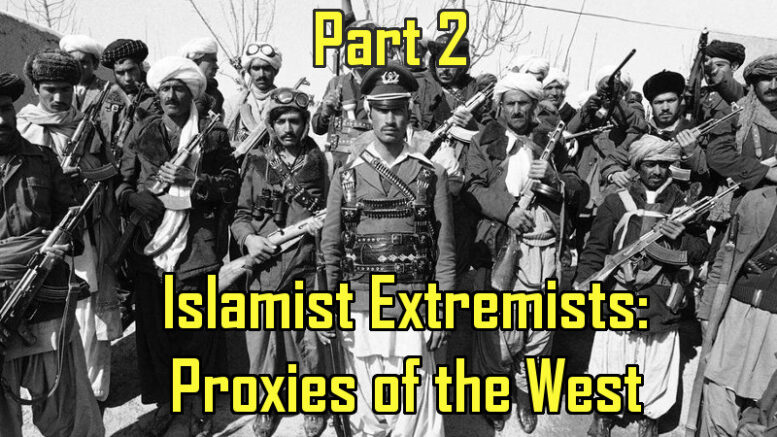
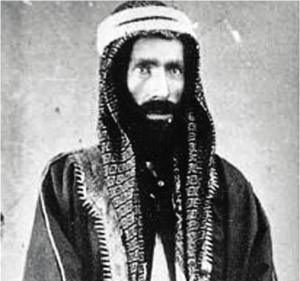


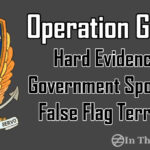
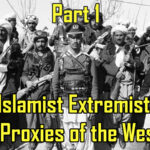
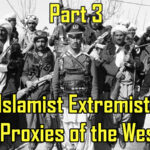
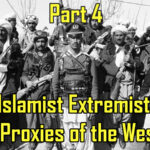
Thanks so much. Really appreciate the translation. Great work.